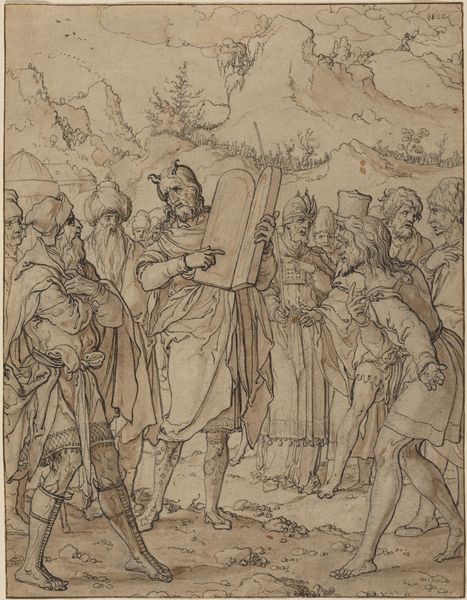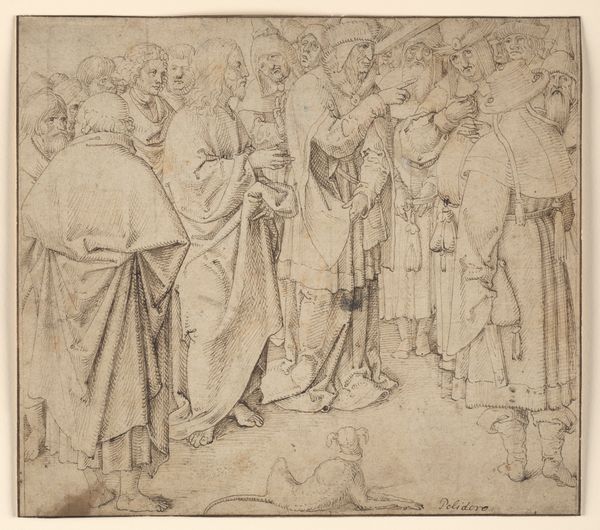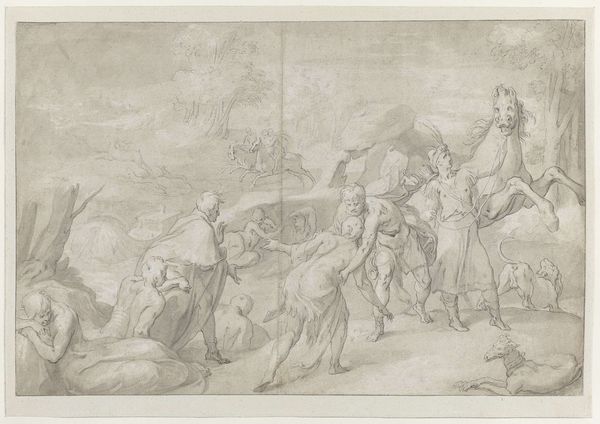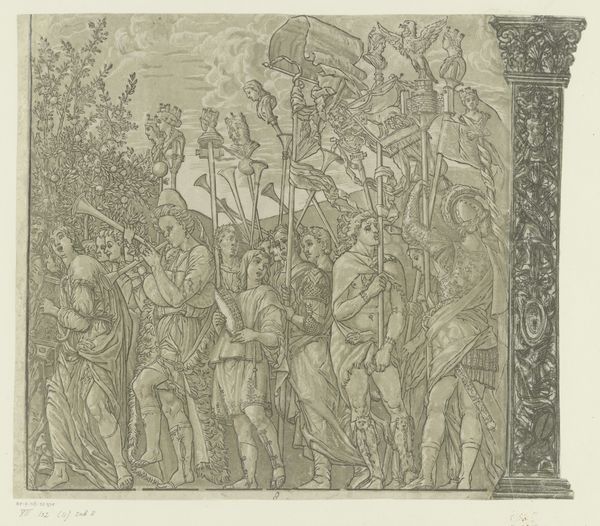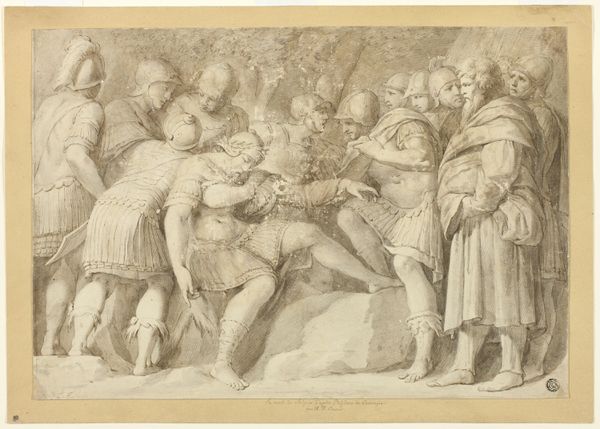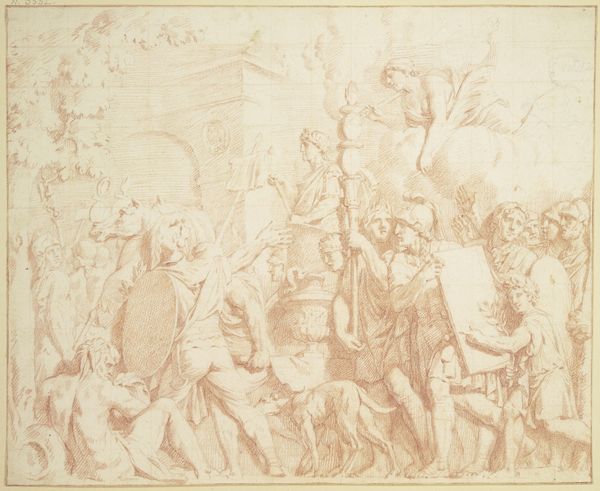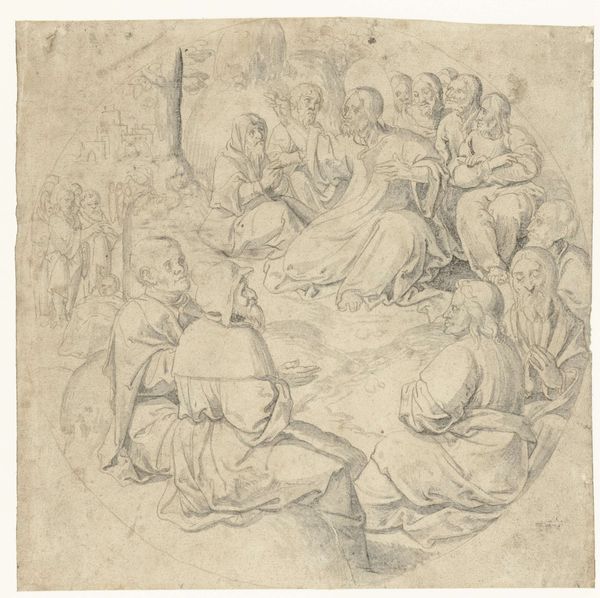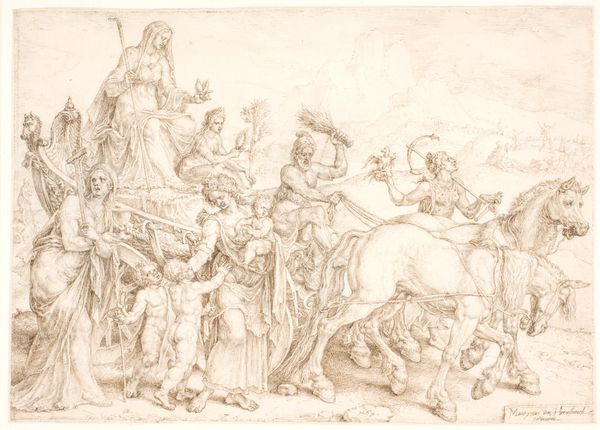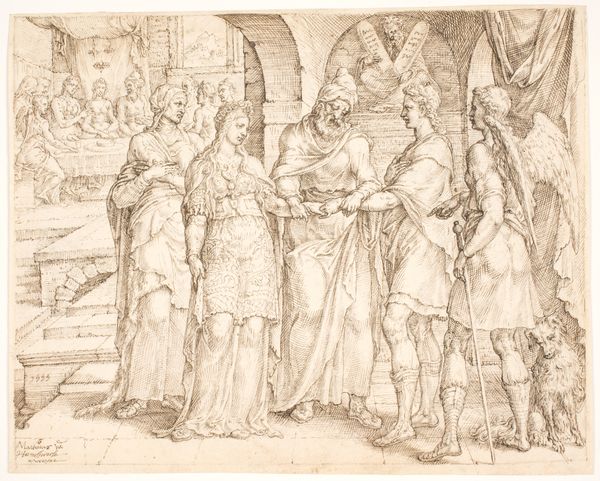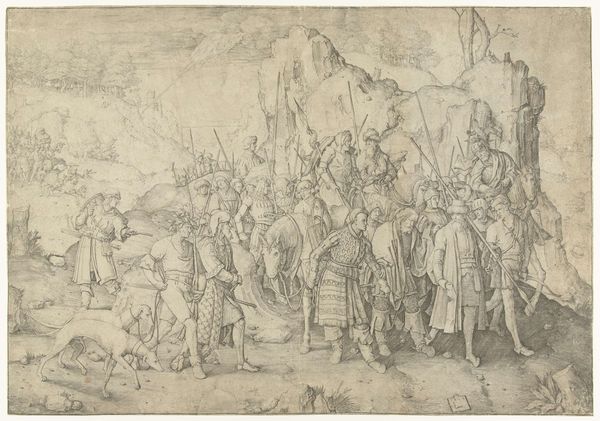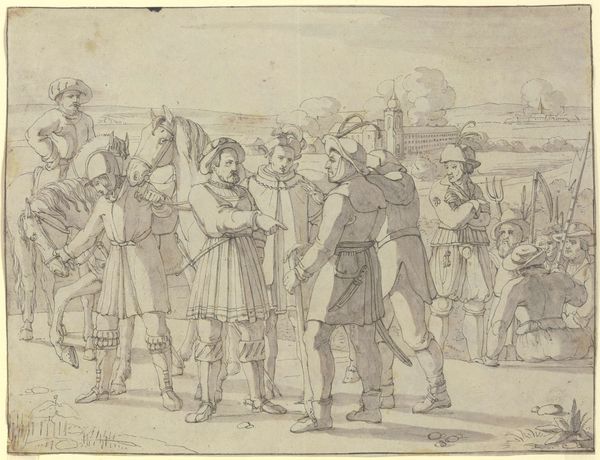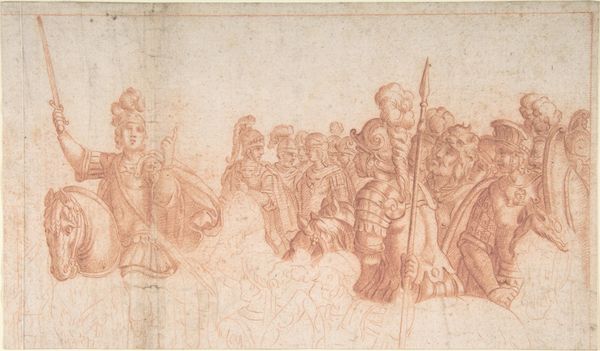
drawing, pencil
#
portrait
#
drawing
#
ink drawing
#
narrative-art
#
landscape
#
pencil drawing
#
pencil
#
history-painting
#
realism
Dimensions: 217 mm (height) x 277 mm (width) (bladmaal)
Editor: Here we have J.L. Lund's pencil drawing, "Knud den Store ved strandbredden," dating from between 1825 and 1830. The scene has a stillness about it, even with the King dramatically pointing toward the sea. It feels like a staged history painting. How does the history surrounding this drawing inform our understanding of it? Curator: The historical context is crucial. Lund created this during a period of intense national romanticism in Denmark. Artists sought to establish a unique Danish identity, often by looking back to idealized versions of their history. The story of King Canute, or Knud, commanding the tide to stop, was a popular symbol of both royal power and its limits, used to instill specific notions of power. Editor: So, Lund isn't just depicting a historical event; he's engaging in a conversation about leadership and national identity? Curator: Exactly! The very act of choosing this narrative and presenting it in this manner–emphasizing the King's authority and connection to the land–contributes to constructing a national narrative. It's worth asking ourselves how this image might have functioned politically within the Danish art world and broader public sphere. The selection of such moments can be interpreted as part of a political and cultural program that aimed to unify the populace around a shared past. Editor: That's fascinating! It's not just about illustrating history but using it to shape contemporary society. I didn't quite get it at first, I just saw an illustration. Curator: And how does the landscape affect our reading of this? Note that Lund strategically places the king on the beach - not in the battlefield or a hall of power. The beach is between civilization and raw nature and it puts King Knud in relation to both domains. Editor: Right, I'm looking more carefully now! This has been really insightful; thanks for sharing this perspective! Curator: My pleasure! It's a good reminder that historical art is never just about the past; it's a dialogue with the present.
Comments
No comments
Be the first to comment and join the conversation on the ultimate creative platform.
